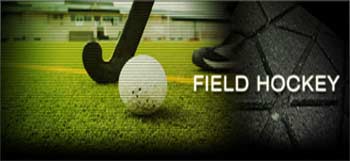Hockey is a team game Structure of the Game:Normally there are three, 20 minute periods in a normal hockey game. If the score secured by both the teams is same at the completion of the third period , there may be an over time period or a shootout to decide which team is the winner. When a team notches a goal, they are given one point. The player who notched is rewarded with the goal, and the players who delivered the puck to slash the goal are bestowed with assists. The team which has the most goals at the completion of the game is acknowledged as the winner of the game.Player Positions Each team has a goalkeeper even though, hardly, a team will play merely with field players just to place extra players into attack. The supplementary 10 players are called field players, and are categorized into three namely attackers, midfielders and defenders. Stick HandlingHockey players need be able to pass, push, control, stop and hit the ball with the given hockey stick. This is well-known as stick work or stick handling. Keeping the ball below close control is termed dribbling. The head of a hockey stick has a curved side i.e. the right side and a flat side i.e. the left side. It is one with the flat, left-hand side of the stick and the boundaries of that side which can be used to hit the ball.No feetField players are not permitted to use their feet or any of the body parts to track the ball. Just the goalkeeper is permitted to make use hands, feet, etc. to halt or push the ball away from the net when guarding in his or her own circle.Ball in the airIn common play, the ball should not be elevated into the air when it is hit. It can however be elevated by using a lifting or a lengthy pushing action of the stick. A player will be penalized if they boost the ball in a way which is risky to another player. Once the ball is in the air, a player should not play it above shoulder tallness. A defender can use their hockey stick at any altitude to protect a shot at goal as attackers are permitted to elevate the ball when making an attempt to score a goal. Numerous shots are elevated because it is an active way of slashing goals.Field GoalsField goals can only be notched from within the circle, which is essentially an unevenly semi-circular area in front of the rivals' goal. If an attacker smashes the ball from external to the circle and it goes hooked on the goal or is affected by a defender on the way, it does not amount to goal score.Duration of a matchA properly regulated hockey match persists 70 minutes which is fragmented into two halves of 35 minutes each with a pause of 5 to 10 minutes. The team with the maximum number of goals at the completion of the 70 minutes is announced as the winner. It is also likely for a match to end in a draw. But in certain matches, such as a tournament game, there must be a winner. In those circumstances, a match which is tied goes into additional time where the first team to score wins, and if required, to a shootout.UmpiresEvery match is organized by two umpires. Both umpires reins half of the pitch and work obligingly in the mid part of the pitch. For corrupt or recurrent offences by players, an umpire can display them a card. A green card is just a warning. A yellow card implies the player is deferred from the game for at least duration of 5 minutes or the time the umpire chooses subject to the nature of the offence. A red card is for an actually serious offence and implies the player is deferred for the rest of the match. If a player is deferred momentarily or permanently, their team plays with fewer players. At international level competitions where the amenities are offered, a team playing or the umpires themselves can state a decision to the video umpire who can use slow motion replays to guide the umpires on the pitch of the right decision.Free HitsFor common offences, a free hit is declared against the team which fouled. Usual fouls are blocking a rival from playing the ball, snooping with the stick or body when attacking, kicking the ball and playing the ball hazardously. For a free hit, rivals are declared the ball where the offence took place. The ball is originally immobile and play will often be re-started by passing the ball to a co-player nearby while all rivals are 5 meters away. Though, the player taking the free hit can also instigate to drop the ball him/herself.Passing LingoPlayers on the ground slog together by fleeting the ball between each other to progress it up the field. The players use a threesome passing system to attach passes to each other. This approach helps avoid the opposite team from interrupting the ball. There are a few common passes that is usually followed in game. Flat pass is a pass straight to the left or right, normally across the field. Through pass is a pass that is a straight forward pass. Back pass is a backward pass.
|
Home >
Games >
Hockey >
How to Play Hockey




